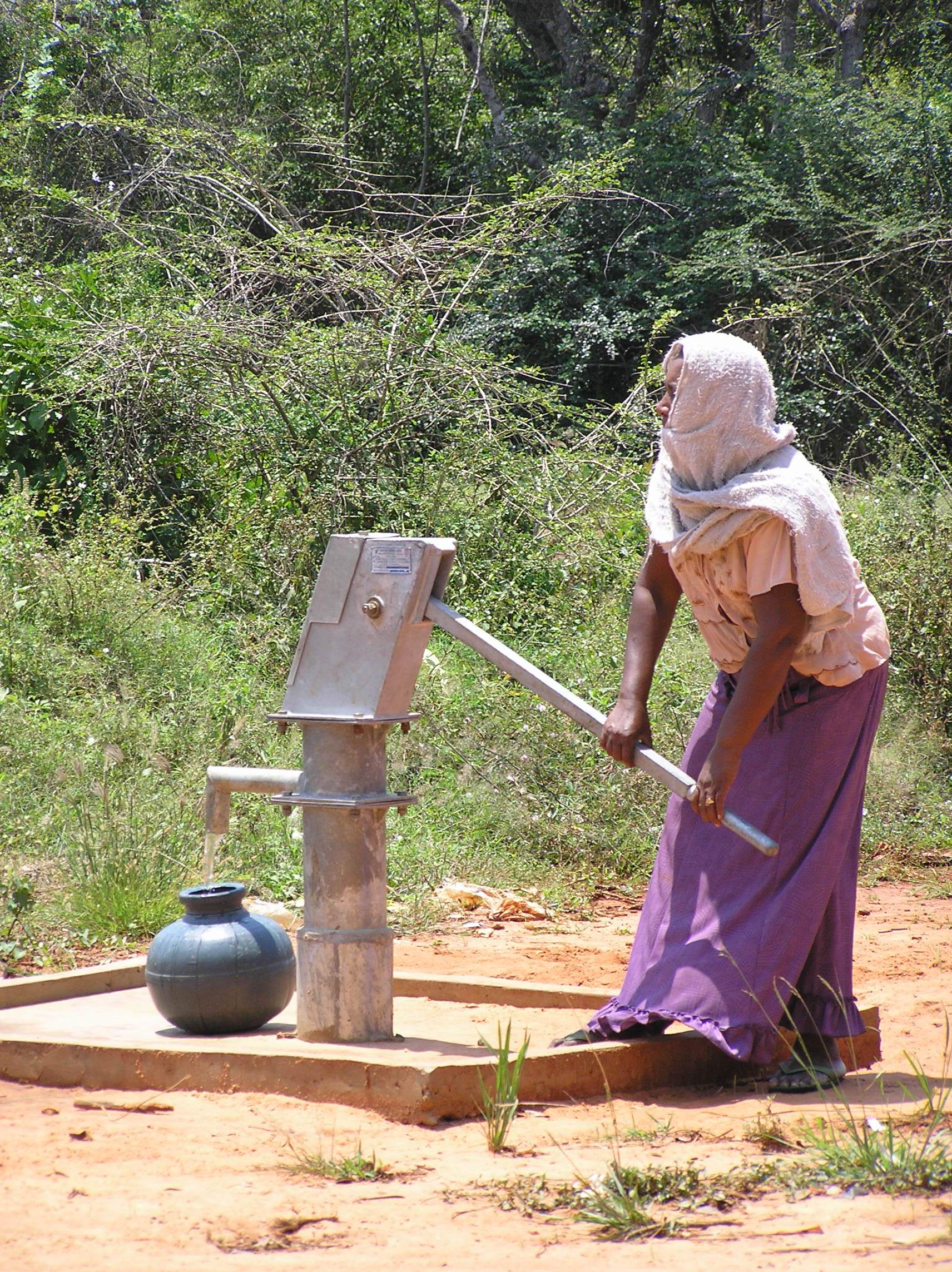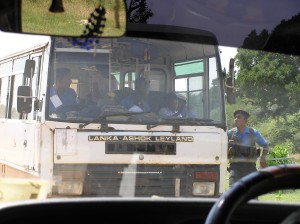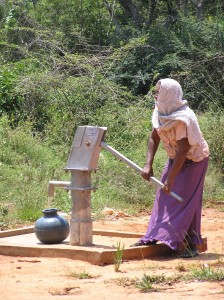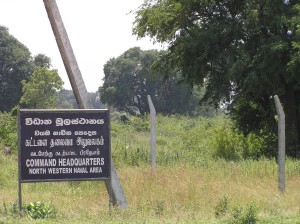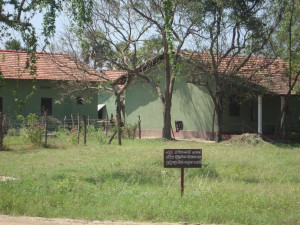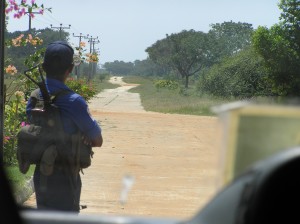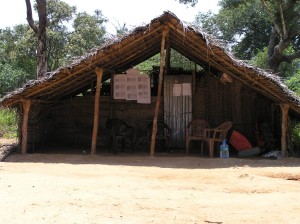Two and a half months since (December 26th 2012) the Defence Secretary, Gotabaya Rajapaksa and Cardinal Malcolm Ranjith met with the people of Mullikulam to discuss[1] their grievances,[2] we visited Mullikulam on 13th March 2013. We were able to see for ourselves and hear directly from the people about the progress made in terms of commitments[3] made by the SLN in relation to the resettlement progress of the Mullikulam people. Primarily, the letter focuses on the progress made in relation to matters of housing, water, infrastructure, fishing, transport and access to the church and school.
While some work has been done by the SLN on the above, access and restrictions have continued or even worsened.
Whilst the letter assures that the SLN has “…granted access for the villagers to visit church and school during day and night time,” some villagers shared that access is being approved on an arbitrary basis, as on some occasions they have not been permitted to visit the church, whilst on others, they have. Still others claim that “known” people are permitted access at any time. There is no full and free access to the Church yet. Apart from ‘Gate Passes’ having been given to two of the villager leaders, school children and teachers being permitted admission daily via the Navy bus to attend school, priests being given free access at any time, and everyone being given access to the church on Sundays, there does not seem to be one clear rule with regard to access.
During our visit, on 13th March, we experienced first-hand the SLN’s lack of clarity on this issue. Ironically, of the 10 persons in the van, only one person did not belong to any of the above mentioned “approved” categories, but still, we were kept waiting at the main gate of the SLN’s North Western Command Headquarters, for close to half an hour. Whilst we waited for “approval” from HQ, a Navy officer came up to the vehicle and asked us if any of us had cameras. When we replied yes, he went over to another officer and told him this. He also asked us why were visiting, to which a priest responded that we were going to check on the renovation work being done on the Church of Our Lady of Assumption (which is located in the heart of the village, now occupied by the Navy).
Finally, after both gate pass holders, another villager and the Parish Priest got out of the vehicle and went to check with the officer in charge, as to the reason for the delay, we were finally permitted to proceed only on the condition of a Navy officer joined us in the van, effectively subjecting us to surveillance and monitoring our activities and conversations. Having visited the school and church premises twice before, this was the first time that we were provided with an accompanying escort. So, contrary to the picture that is being created that the SLN is ‘loosening its reins’, on the issue of access in particular, there seems to be “tightening” of access with additional surveillance. This clearly indicates the lack of religious freedom and dishonoring of the commitments made, in addition to the discrimination meted out in terms of access to this particular place of worship. We are not aware of any Buddhist Temple and indeed other places of religious worship where such restrictions are placed and visitors subjected to such strict surveillance. It also flies in the face of LLRC’s recommendation that there should be access to all places of religious worship, including those in High Security Zones. But it makes more sense when seen in light of the statement[4] made by the Defence Secretary, that the “…Mullikulam base will continue to function as a RSC (Regional Security Centre) and will not be removed or relocated in any other place as it will jeopardize National Security objectives,” at the December 26th meeting last year.
Subsequently, on the North Western Area Commander, Rear Admiral N.K.D. Nanayakkara’s return (as he was out when we visited) to Mullikulam, and on hearing about our experience, he was reported to have reprimanded the officers at the entrance of the Base severely, and sent 3 Navy officers to the settlement to apologize for delaying to keep the people waiting at the gate, without allowing them to visit the church freely as promised.
And with regards to fishing, more restrictions have come into place instead of restrictions being relaxed. The letter states that the people are permitted to fish during the day and that night fishing has been extended to 10pm. However, the people say that before the 30th of January, 2013 they were permitted to fish unrestricted over-night.
This sudden restriction on night fishing has posed much hardship for the villagers, as there are apparently very few fish during the day time. Furthermore, prior to the December 26th meeting last year, the people were permitted to fish along the entire 2½ kms (equating 6 Paadu, which is a Deed to fish in a specific area) stretch of coastline between the Modaragama river and Pemunthal. Now however, the villagers are only able to fish in 1km (3 Paadu) radius as the remaining 1½km has been restricted due to “security reasons”, by the SLN. Therefore, the villagers say that it is not an “extension” of the time allocated for night fishing, but rather a reduction of that time.
Furthermore, despite this more than 5 years since military established its control in Mullikulam, since their return to Mullikulam in June, 2012, they have had to subscribe to a ‘Pass System’ authorizing them to fish in the same waters that they used to fish unrestricted before their displacement. Unlike in other parts of the country, the SLN plays the dominant role in regulating the fishing. Each fisherman must get himself registered with the Mannar Fisheries Authority, who will then send a registration letter authorizing them to fish in the demarcated 6 Paadu, to the SLN, who will in turn issue a pass to the registered fisherman. So far, 130 fishermen (including those who take part in Maadal fishing, which is mostly carried out from the shore), from the Malankaadu settlement have been registered and issued with a pass from the SLN. Every morning the fishermen must hand over their photocopy of the pass to the SLN and take the original to sea with them. On their return, they need to exchange the passes once again before returning home.
In relation to their cultivation lands, 450 acres fall within the Naval base, and is therefore still inaccessible to the villagers for cultivation. They are only permitted to cultivate the 640 acres that is located North of the canal. Furthermore, of the 7 tanks that were originally accessible to the people, they can now access only two, Pulliyankulam and Addappankulam, of which the latter lies along the 750m border, and is therefore meant to be shared by both the SLN and the people. The people however said that they do not make use of the shared tank as Navy officers bathe there and they do not want to create unnecessary problems. Furthermore, as the 5 tanks within the Navy occupied lands have not been maintained during the war, they are no longer functional, and even many of the people’s original paddy lands inside the base are no longer fertile as the SLN has built direct access roads that run across the paddy lands.
However, in reference to some of the SLN’s claims in terms of infrastructural development, some progress made to date. Following is a list of claims and the progress made as of 13th March, 2013. (Based both on feedback from the people and first-hand visits to the sites);
– The SLN is constructing 26 houses for resettlement in Malankaadu (near where the people currently reside in a temporary camp). – 75% complete. But the people were also very concerned that they had yet to hear any news regarding the commitment of 130 houses to be constructed under the Indian Housing Scheme.
– Renovation of the Church complex – 25% complete, although the SLN letter says 40%.
– As for the demarcation of land between the people and the SLN, the letter states that the Navy camp is confined to the South of the canal, and the people to the North. The people confirm this demarcation.
– Approximately 2 acres near the coast has been cleared for a public cemetery, although the SLN letters only claims to have cleared ½ an acre.
– The SLN has constructed 2 concrete pedestals to place water tanks on, in the school. It has not donated two water tanks to the school as per the letter.
– A school bus service is run free of charge by the SLN, and has been in operation since the MN/Mullikulam R.C.T.M. School re-opened on the 6th of February, 2013. The bus picks up 35 students, 2 teachers and 2 cooks from the Malankaadu settlement daily at 6.45am and drops them back by 1.45pm.
– In accordance with the letter, the SLN has provided drinking water via bowzers once every two days to, and constructed two toilets at, the settlement in Malankaadu when the villagers first returned to Mullikulam in June 2012. However, with regards to providing the villagers with a generator to supply electricity, the 1400 Horse Power generator they were given by the SLN at the end of January, broke down after two weeks. Having then returned it to the SLN for repairs, they have yet to be provided with a replacement. However, as the house construction in ongoing nearby, and generators are in use for the construction work, the settlement too gets a daily power supply whenever the generators are on. Villagers say that times vary from day to day.
– The letter also mentions that having taken into consideration the people’s appeals to extend the grace period for using nylon nets, as they were badly off, that they had extended its’ usage till the 28th of February, 2013. However, the people say that following a meeting on the 8th of February, 2013, at the SLN base, it had been agreed on that the period be extended a further 6 months till July, 2013.
– The letter states the SLN has cleared 1.5km stretch of road from the beach to the village. Villagers say that about 2kms have been cleared, but as it is only about 13ft wide, the Survey Department had recommended that it be widened further as it was not as wide as a regular road should be. The SLN had promised to widen it according to the Survey Department’s recommendations.
– According to the letter, Navy has employed two women from the village and appointed them as primary school teachers. They have received two months payment of Rs. 30,000 per month, from February 2013 to date. It is also mentioned that the SLN had requested for the villagers to send their children to the Seva Vanitha Pre-School, located in the school premises in Mullikulam, where about 10 children of Navy officers currently attend school. However, the children’s parents had been reluctant to send their children to this pre-school as it is run by the SLN, so now their children attend pre-school in a make-shift cadjun hut at the settlement, which switches between being a Sacristy (part of a Church), meeting place, community notice board area and pre-school, depending on the need of the hour.
– As for the clearing of internal access roads, as per the Mullikulam Village Plan jointly proposed by the Urban Development Authority and Survey Department, at the meeting held on the 6th of February, 2013 at the Mullikulam Government Agent’s office, the villagers said that they had not seen the plan, but that work was currently underway to clear the internal access roads. The villagers have been told that they will be shown a plan on the 19th of March, 2013.
The people also told us about how approximately 25 Navy families now live in their lands and that 33 houses have been repaired and occupied by the SLN, with more than 20 female Navy personnel having taken up residence within the former hospital building. Furthermore, of the two school buildings, only one has still been released for the 35 students from Mullikulam to study in. The remaining building is still being utilized to conduct Civil Engineering classes for the SLN.
Whilst some limited progress has taken place since the December 26th (2012) meeting, the people of Mullikulam have not been given any specific deadlines regarding either the completion of the SLN’s work, or when they would be able to return to some semblance of normalcy.
Overall, Mullikulam people’s wait to live in freedom, dignity remains a distant dream.
– GV
